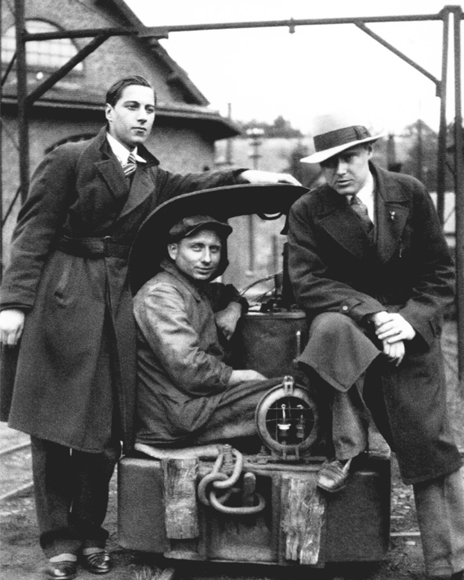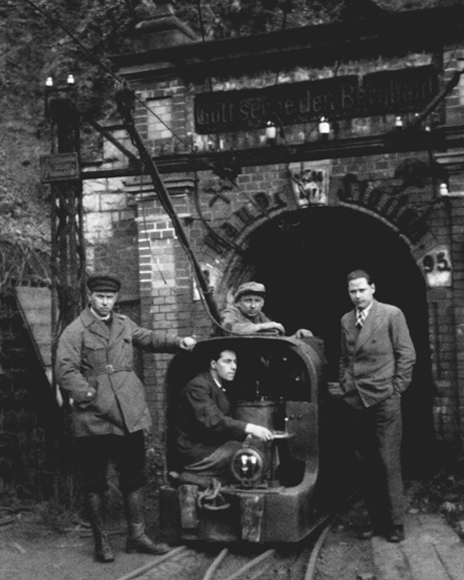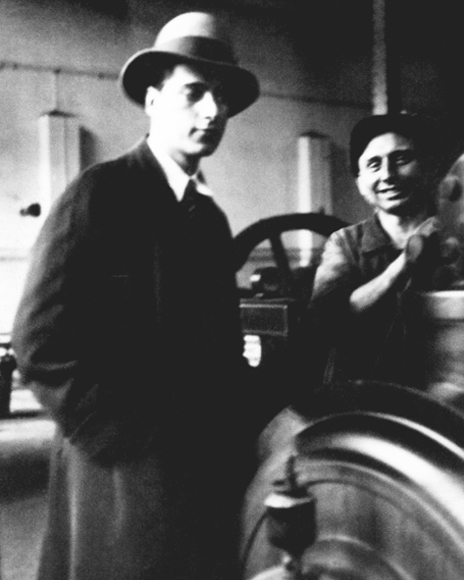Friedrich Pascoe - experiments and inventions
Chapter I: 1895-1918
1. From an upper-class background
On 1st December 1894, Friedrich Pascoe took over the Adler pharmacy in Mülheim an der Ruhr, which had been opened in 1778, from Dr. Friedrich Mellinghoff – a task for which he was well prepared. Coming from an upper-class Gießen family, he had studied natural sciences and pharmacy after a pharmacist apprenticeship. He now wanted to apply his successes and knowledge to his own pharmacy. He was headed for a fast-paced career, because when Friedrich Pascoe bought the Adler pharmacy and thereby laid the foundations for the Pascoe company, he was only 27 years old.
He was born on 31st May 1867 in Gießen as the fourth of nine children of the mining director Samuel Pascoe (1835-1908) with English origins and his wife Auguste Linz (1839-1908). Their second son, called Friedrich, was christened Arthur Frederic Henry Pascoe according to English tradition. His father Samuel Pascoe was the plant manager of the Gießen manganese ore mine Grube Fernie for decades and was valued and liked for his professional competence and fairness towards the miners. For Pascoe’s 40th service anniversary in September 1897, the mine owner Charles W. Fernie held a big celebration with hundreds of guests, which was a milestone in the history of Gießen. The celebrations opened with an evening torchlight parade: mine workers and officers paraded singing through the streets wearing their formal uniforms.
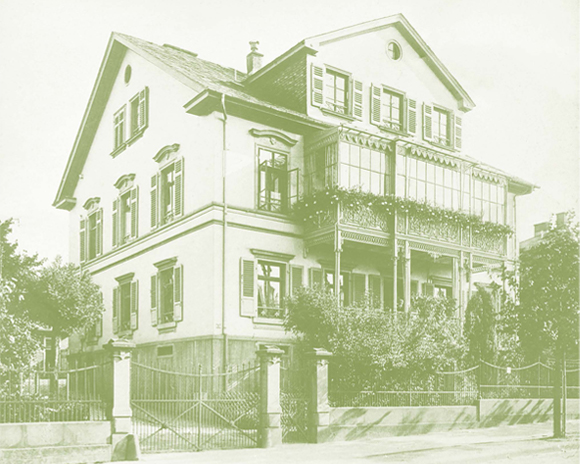
The next day, they accompanied the decorated carriage with Samuel Pascoe and his family to the big festival square. Hammering and building had taken place here for two weeks to build marquees and dance podiums. In the festive speeches, the speakers not only praised Samuel Pascoe’s entrepreneurial skills but also emphasised his paternal relationship with “his” workers, for whose concerns he always had an open ear. After the jubilarian had been given numerous gifts, including a trophy and silver writing implements, a merry folk festival began that ended late in the night with magnificent fireworks.
Friedrich Pascoe came from an upper-class family. Accordingly, his six sisters made good marriages, four of them to doctors. The husband of Friedrich’s younger sister Nelly (1872-1946) was the well-known hygienist William Dunbar (1863-1922). Born in Minnesota, the son of a banker and a German pastor’s daughter had competed the state medical examination in Gießen in 1892 and in the same year became the Director in Hamburg of the Hygiene Institute, founded upon urging by the bacteriologist Robert Koch (1843-1910). The cholera epidemic that broke out in Hamburg in summer 1892 had already cost more than 200 lives when Dunbar and his employees took on the fight against the deadly disease, from which around 8600 people died.
Friedrich’s eldest sister Henriette was married to the Gießen legal counsel Wilhelm Grünewald (1859-1925), one of the co-founders of the liberal German Democratic Party (DDP), whose voters came especially from the educated bourgeoisie and the circle of independents and employees. Grünewald was appointed to the Weimar National Assembly and was a member of the Reichstag for some years.
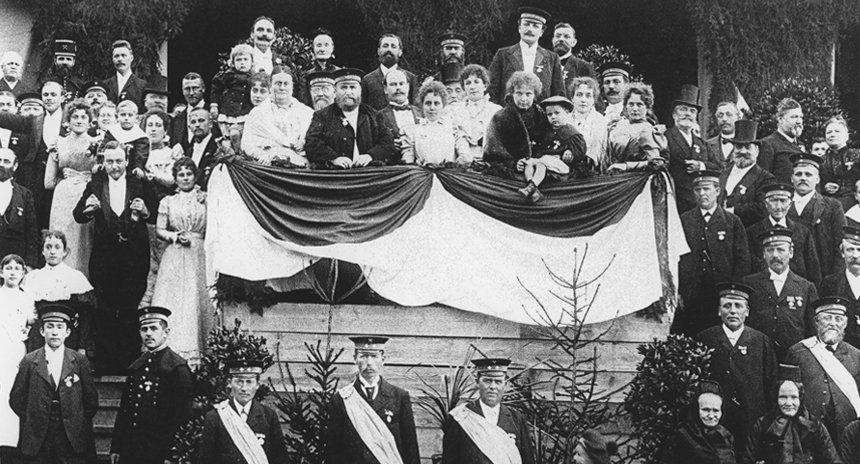
2. Samuel Pascoe and the Gießen manganese ore mine
In the Lindener Mark area on the southern edge of the town Gießen, manganese ore had been mined since the 1840s. The extracted manganese was an important element for the manufacturing of chlorine. Chlorinated lime was needed in the textile, chemistry, glass and steel industries. After the Brit Ebenezer W. Fernie had taken over the Gießen manganese ore mine in the 1850s, ‘Grube Fernie’ experienced an economic upswing. This was largely due to the Englishman Samuel Pascoe, who Fernie brought to Hessen as Director in 1857.
Pascoe modernised and rationalised the mine operations. For the rapid transport of large amounts of ore, he used locomotives on site and built a cable car to the Gießen railway station. In 1892, the mine owner appointed Samuel Pascoe as the director of the mine. Due to his professional knowledge and entrepreneurial commitment, as well as his cordial manner, openness and patriarchal care, Samuel Pascoe won the trust of the officers and workers. On his 60th birthday on 20 September 1895, Pascoe set up a company family health insurance for the employees, through which the families of employees received free treatments and medications.
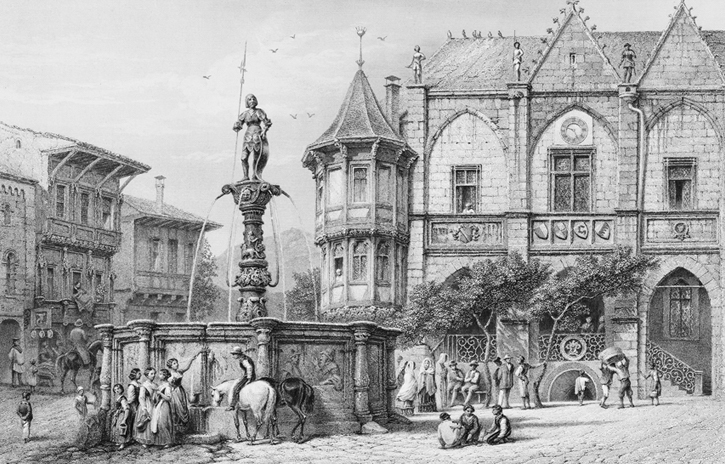
3. Pharmacy apprenticeship in Hildesheim
The marriages of the four Pascoe sisters indicate an unmistakable partiality to medicine in the family. Friedrich Pascoe also chose a medical profession. In November 1883, the 16-year-old started an apprenticeship at the Hildesheim pharmacy Rats-Apotheke, one of the oldest pharmacies in northern Germany, mentioned in records since the early 14th century.
After the founding of the Reich in 1871, pharmacist training had been standardised: a three-year apprenticeship was followed by three semesters of studies. As the manual preparation of medicines was among the main tasks of a pharmacist, at the end of the apprenticeship during a tw-day examination, Friedrich Pascoe had to pass several practical tests alongside written and oral examinations in pharmaceutical-botanical and pharmaceutical-chemical knowledge. He examined pharmaceuticals for their purity, prepared medications according to prescriptions and pharmacy books and translated two articles from the Pharmakopoea Germanica written in the Latin language. This first standardised medical textbook had been published in 1872 and prescribed raw materials for pharmaceuticals, as well as their preparation, properties, checking and storage. After the successful conclusion of his pharmacy apprenticeship in 1886, Friedrich Pascoe worked for three years at the pharmacy Rats-Apotheke. Then he left Hildesheim and returned to his Hessian hometown of Gießen.
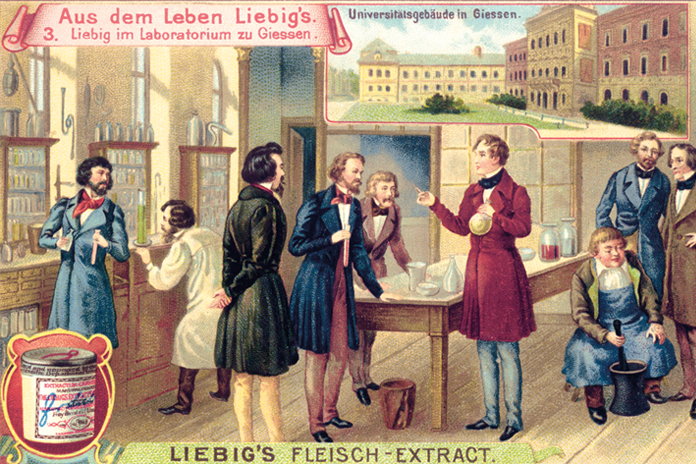
4. Pharmaceutical studies in Gießen
To be able to run a pharmacy, studies were mandatory, whereby at the time enrolment was still possible without a school leaving examination. Friedrich Pascoe started natural science studies in the winter semester 1889/90 at Großherzoglich Hessiche Ludewigs University in Gießen. After a few semesters, in 1891 he worked once again for half a year at the pharmacy Rats-Apotheke in Hildeseim, before enrolling at Gießen University for the second time in spring 1892, this time for pharmacy. It is surprising that he chose Gießen once again insofar as pharmacy had had a bad reputation there since the 1880s. There was a lack of standardised study plans, the subject of pharmaceutical chemistry was no longer taught by professors but only by assistants, and the range of lectures was constantly diminishing. Instead, the neighbouring former Hessian state university in Marburg had evolved into one of the leading educational establishments for pharmacists. The university in Gießen had laboratory that had been well set up by the famous chemist Justus Liebig (1803-1873), as well as a centuries-old and very beautiful botanical garden.
After four semesters, Friedrich Pascoe completed his studies in autumn 1894 with a legally regulated examination. Before an examination committee of four, including university professors from the disciplines of pharmacy, botany, chemistry and physics, along with a pharmacist, he proved his knowledge of various areas of natural science knowledge, as well as of legal pharmacy regulations, both in writing and orally. The practical examinations comprised the manufacturing and written explanation of medicines and of chemical-pharmaceutical preparations, as well as quantitative and qualitative analyses of various mineral mixes. In addition, Friedrich Pascoe had to examine several toxic substances and determine the toxin. Finally, fresh and dried medicinal plants had to be described, their effective substances identified and details given of their use and falsification. Through his apprenticeship and studies, Friedrich Pascoe had very comprehensive theoretical and practical qualifications. As a tested pharmacist, he now faced his next challenge: finding a pharmacy for sale.
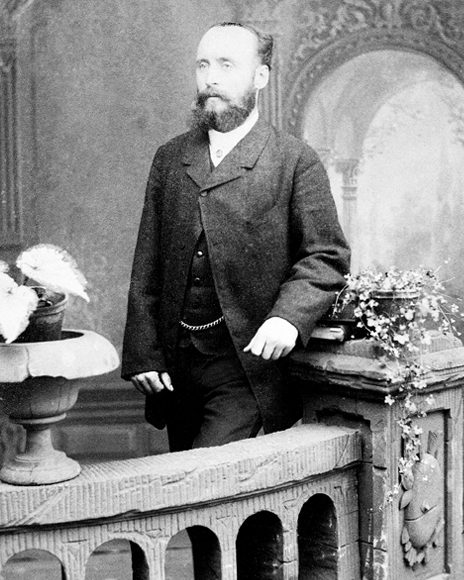
5. Pharmacist in Mülheim an der Ruhr
For a young pharmacist, it was not so easy in the Wilhelmine empire to become one’s own boss. For pharmacists, there was no freedom of establishment, the profession was explicitly excepted from free enterprise that had applied since 1861 in Prussia, due to its significance for the health of the population. The number of pharmacies was therefore limited: each individual pharmacy was authorised by the state as part of an elaborate procedure. Since summer 1894, an operating permit was issued by the state for every change of owner according to the so-called strict personnel licence. However, as the number of qualified pharmacists had grown significantly in the 19th century, there were too few pharmacies. The high demand drove purchase prices upwards. The fact that Friedrich Pascoe was able to buy the Adler pharmacy in Althofstrasse 6 in the midst of the Mülheim town centre just a few months after completing his pharmacy studies was no doubt linked to his having wealthy parents.
Friedrich Pascoe had been the eldest living son since the early death of his brother Rudolf in 1887. For the Mülheim pharmacy, in other words the building with its facilities and licence, he paid more than half a million marks. The money was well invested, because since the founding of the Reich in 1871 Mülheim an der Ruhr had developed into a prospering industrial town with numerous mines and steel works. Particularly in the densely populated Ruhr area, the official and state-authorised pharmacies could no longer meet the huge demand for medicines around 1900. This also applied to Mülheim an der Ruhr, where four pharmacies – Engel, Hirsch, Adler and Löwe – had to supply around 32,000 people with medicines.
The Mellinghoff’sche Adler pharmacy, as it was called after being taken over by Friedrich Pascoe, had been owned by the Mellinghoff family for three generations. On the ground floor, the community room – meaning the sales and work room – provided ample space for six pharmacy assistants at three tables. Apart from big pharmacy scales, small manual scales no doubt also stood on the sales counter. On the walls of the community room, there were rows and rows of shelves with countless glass and ceramic containers, containing solid and liquid substances for preparing medicines. The work area was dominated by numerous crucibles, glass flasks and mortars, funnels, spatulas and spoons, as well as mechanical presses for making tablets or ointments. Here the medicines were made, filled and packed or sent according to doctors’ prescriptions. Frequently requested medications were kept in stock. The Mellinghoff’sche Adler pharmacy presumably did not have a laboratory. Because around 1900, pharmacists no longer manufactured many chemicals themselves on financial and time grounds but instead bought them from pharmaceutical enterprises such as Schering, Bayer or Hoechst. On the other hand, Friedrich Pascoe had the “biggest local stock of bandaging materials and articles for all kinds of healthcare in the best quality”. Adjoining the work room, there were several big storage rooms with baskets full of dried plants, barrels with chemicals and traded goods, including bed covers, rubber items, Parisian specialities, as well as cooking devices and thermometers. The pharmacist Pascoe also promoted the safety protection ring according to Dr. Cave, a contraceptive for women.
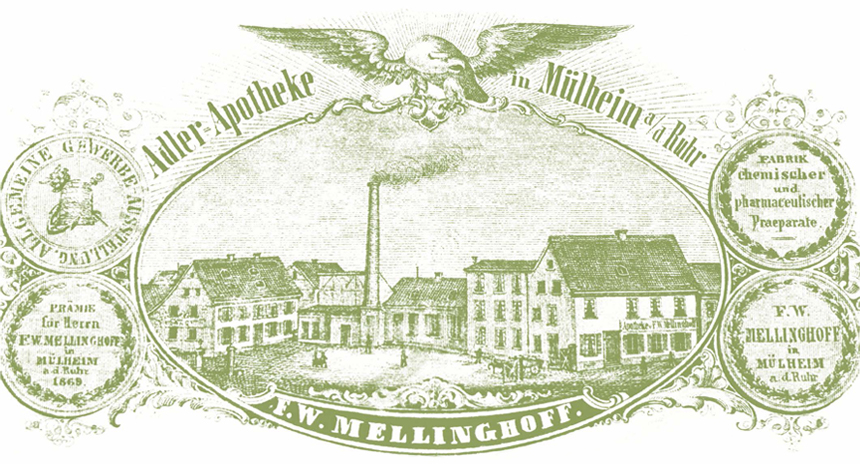
6. Wide product range: wines, mineral waters and “specialities”
The product range at the Mellinghoff’she Adler pharmacy also comprised a wine depot with red wines from Germany, Italy, France and Hungary, white wines from the Rhine, Moselle and Palatinate, and southern wines such as sherry, port or marsala. Pascoe also had spirits such as rum and various cognacs. As specialities, he stocked Faust, the best gentleman’s breakfast liqueur on the market, and the highly elegant ladies’ liqueur Adonis. For a while, Friedrich Pascoe also offered natural and artificial mineral waters. Pascoe even planned to manufacture artificial mineral water himself. However, he soon gave up this project again, presumably because large-scale production required expensive equipment. Furthermore, Pascoe would have had to provide warehousing for the mineral water filled into bottles, along with a transport vehicle for deliveries. For a short while, he also ran a non-dispensing shop and sold cosmetics, hygiene articles and cleaning substances.
According to Friedrich Pascoe’s own estimation, the Mellingshoff’sche Adler pharmacy was the largest pharmacy in the Rhineland and Westphalia. He offered those interested a visit “at any time”, so that they could see the generous premises, efficient facilities and good equipment with their own eyes. He promised his customers the highest service: “The quickest and conceivable most precise dispensing [preparation] of all prescriptions, as well as the immediate sending of medicines to all parts of the town and free of postage throughout Germany.”
Friedrich Pascoe proudly called his pharmacy a factory for chemical and pharmaceutical products. Factory stood for centuries-old pharmacist trade skills in the manufacturing of medicines. Especially at a time in which more and more ready-made medicines were coming to pharmacies from the pharmaceutical-chemical industry, Friedrich Pascoe offered his customers self-developed medicines as his house specialities. In 1896 he brought Pascossan onto the market, a powder consisting primarily of lime and iron, for strengthening bone development. Pascoe promoted the good tolerability of the medicine and also recommended it for toddlers. Two years later, he presented Pascoe’s Aromatic Iron Tincture, which had won an award in Brussels, Paris and Marseille and was recommended for treating anaemia, weakness and a lack of appetite.
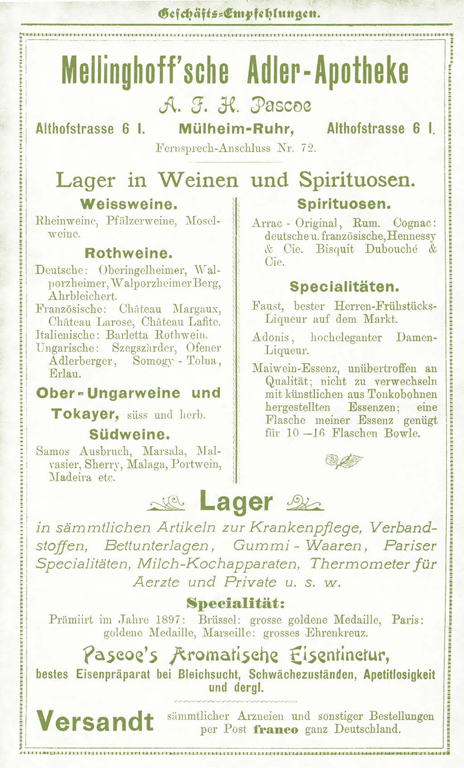
7. Sale of the Mellinghoff’sche Adler pharmacy
In total, Friedrich Pascoe was a pharmacist in Mülheim for eight years. During this time, he married Hermine Heide in October 1896, with whom he had three children: on 12th July 1897, Erica Julia Augusta was born, on the 7th August 1898 Margareta Henriette Marie and on 21st September 1999 their only son Friedrich Samuel Jacob, called Fritz.
One can only make assumptions about the reasons why Friedrich Pascoe sold the Mellinghoff’sche Adler pharmacy in October 1902. Business may not have been developing as hope because of the changes in the pharmacy sector, because the manufacturing of medicines was no longer the monopoly of pharmacies. More and more chemical industrial enterprises discovered the manufacturing of ready-made medicines as a promising field of business at the end of the century. The Goods Protection Law that came into force in 1894 explicitly prohibited pharmacists from selling self-made medicines under the name of a registered trademark such as aspirin, if the specific industrially produced medicine was noted on the prescription. Furthermore, increasing numbers of medicines were approved for free sale. Pharmacists who could not or did not want to find the funds for a pharmacy circumvented the licence system for pharmacy permits and opened a drugstore, for which they only needed a business licence. These “wild pharmacies” often sold medicines at lower prices than pharmacies.
After the sale of the pharmacy in Mülheim, Friedrich Pascoe was active throughout Germany for 16 years. There are only few sources for this period, up until now only the company or the location are known. Pascoe apparently ran a pharmacy in Kaiserslautern and the A. F. H. Pascoe factory for chemical-pharmaceutical preparations in Bad Homburg. For a while Friedrich Pascoe was in Wiesbaden, where he ran several enterprises. There is further information only about his years in Hamburg.
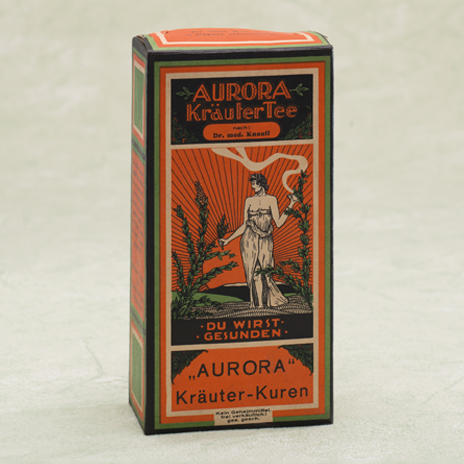
8. Friedrich Pascoe in Hamburg: pioneer of healing plant remedies
Friedrich Pascoe came to Hamburg in 1907, where he founded the company A. Frederic H. Pascoe for chemical-pharmaceutical products that specialised in plant-based remedies, as well as Aurora Werke Hamburg that offered teas, nutrient salts, dried fruit, oils and fruit pastes. Under the brand of Pascoe’s Nutrients, he promoted “a number of first-class and purest semi-luxury goods”, thereby following a trend for forming brands. Within a short time, the Pascoe products conquered Hamburg: Pascoe’s chest pastilles, Pascoe’s fruit emulsion for strengthening the organism, Pascoe’s breakfast tea, Pascoe’s Erika German tea, Pascoe’s peppermint essence for strengthening the digestive organs, as well as Pascoe’s dried bananas with a high nutritional value. The product range also comprised spruce needle extract against skin complaints and rheumatic complaints, Australian eucalyptus oil for use against eye, ear and nose diseases, essential oils of lavender, sage and cypress for treating coughs, stomach pain and asthma, as well as the “ozone-rich” noble fir fragrance for interiors. Pascoe promoted cosmetic plant preparations for strengthening the hair, cleansing the skin, caring for the eyes, as well as for disinfecting and refreshing mouth and tooth hygiene, along with Pascoe’s eye water and Pascoe’s herbal soap, the queen of herbal soaps.
In 1909, Friedrich Pascoe and companions ran a wholesaler for grain, flour and foods, as well as pharmaceutical products, but which was sold again within a year. The manufacturing of plant-based remedies was clearly at the forefront of his business activities in Hamburg. “Already a thousand years ago, people made use of nature for healing purposes and finally it is also starting here with us, for the most noble of nature to serve us with such rich treasures. Most of the treasures of our forests and fields are still unknown to people, herbs are still thrown away or trodden on in disregard and nobody has any idea what healing power is harboured by these small witnesses to great wisdom!” With these words from his brochure about the special herb mix Espekaëm, Friedrich Pascoe promoted the popularisation of healing plant remedies.
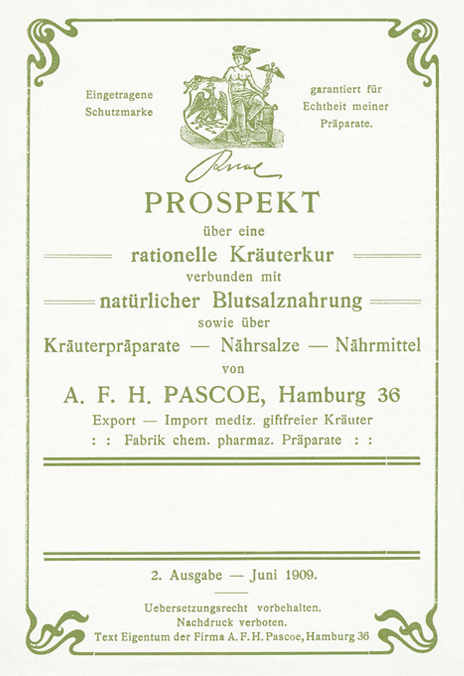
Since the Greek medic Pedanios Dioskurides had described more than 800 plants and their healing effects in the first century AD in his “Five Books of Medicinal Theory”, plant remedies were the first choice until into the 18th century. Knowledge about the healing effects of plants was widespread among the population. With the surge of natural science medicine in the 19th century, this knowledge was increasingly lost. Friedrich Pascoe therefore wanted to forge a better understanding of healing herbs with his brochure published in 1909.
In the meantime, he had been investigating the medicinal properties of plants for 25 years. He had established that the effective substances for example of calcareous plants healed lung complaints and also helped with urinary troubles.
He put together special herb mixes against 45 indications, including stomach cancer, obesity and impotence, which he offered under the brand Espekaëm.
His credo: use the healing power of nature. He promised his customers to only use plants of the best quality and to process them carefully whilst still fresh. The Espekaëm mixes sold increasingly well, soon also throughout Germany.
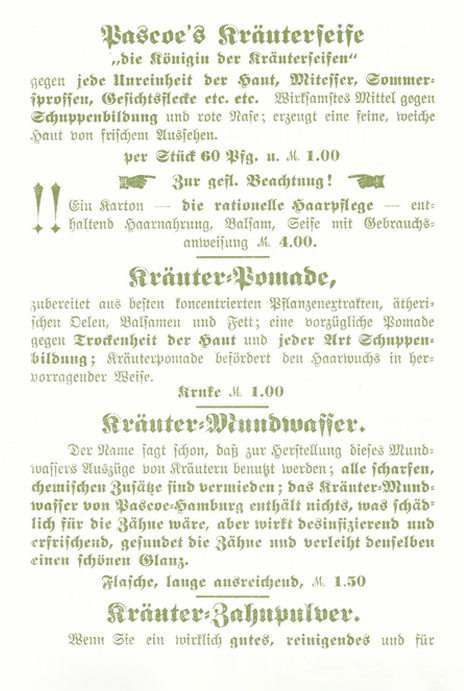
9. Peripatetic years
Business with the Pascoe and Espekaëm brand products went so well that Friedrich Pascoe referred to his company in 1909 as “no doubt the biggest herb business of its kind”. It is not known why he left Hamburg in favour of Wiesbaden in April 1012, despite his success in the Hanseatic city. He relocated the headquarters of his companies A. Frederic H. Pascoe and Aurora Werke Hamburg to the internationally renowned spa town, where there were numerous thermal and mineral sources; perhaps because he hoped to be able to enter into the Wiesbaden spa business with his healing plant remedies. It is also not known why he took over the “Nonnenhof” inn there.
Just a few months after his arrival in Hessen, in October 1912 Friedrich Pascoe sold the company for the production of pharmaceutical products to the pharmacist Otto Ascherbehl from Berlin-Charlottenburg and Hermann Jolk from Greetsiel in East Frisia. Due to the success of the pharmaceutical products, his successors kept Pascoe in the corporate name. The fact that Friedrich Pascoe sold not only machines, equipment, furnishing and all warehoused goods but also all the recipes, trademarks and all patented tradenames indicates that he wanted to reorientate himself in business.
Under the private address Klarenthaler Strasse 1, he traded from the end of May 1913 as a “General representative for goods agencies,” and he presumably continued with the foodstuff company Aurora Werke Hamburg. About a year later, on 1 August 1914, the First World War started, ending for the time being the economic activities of many entrepreneurs, including those of Friedrich Pascoe. The war economy gradually suppressed civil production and led to a raw materials shortage. At some point during the war years, Friedrich Pascoe moved to Pfastatt in the Alsace. The time of change after the end of the First World War 1918 offered an ambitious entrepreneur like Friedrich Pascoe new opportunities.
10. Plant remedies: from folklore to science
In popular culture, the healing effects of plants had been known for centuries as experience. In the late 17th century, researchers in France started the natural science identification of plant substances. When the pharmacist assistant Friedrich W. Sertürner (1783-1841) succeeded in the year 1805 in isolating the first alkaloid (morphine) from opium poppy, plant analysis experienced a big upswing. It was established as an independent science by the Swiss pharmacist Friedrich A. Flückiger (1828-1894) in the last third of the 19th century in Bern, as experimental pharmacognosy – today a field of pharmaceutical biology. The task of this research discipline was the exact scientific, macroscopic and microscopic description of healing plants and the chemical analysis of their substances.
A further important station on the way to today’s medically recognized phytotherapy (botanical medicine), a term coined by the staff surgeon Karl Kahnt, was the experimental pharmacology founded by the Frenchman François Magendie (1783 -1855). Its research subject is the study of the effect of substances on the organism. The first experimentally researching pharmacological institute in the world was set up by the medic and pharmacologist Rudolf Buchheim (1820-1879) around 1850 in the Baltic Dorpat (present-day Tartu, Estonia) at the German-speaking university there.
11. Natural medicine: protagonists and approaches
From the early 19th century, natural medicine experienced a big boom. Opponents of traditional medicine rejected bloodletting, purging and toxic medicines and demanded that the healing forces of nature be used increasingly in the treatment of patients. Representatives of natural medicine practiced air and sunbathing, cold water treatments, as well as mud baths and recommended a dietetic or vegetarian diet. The most influential representative of water remedies (hydrotherapy) was Vincenz Prießnitz (1799-1851), a farmer’s son from Gräfenberg in Silesia. He developed a holistic therapeutic system of cold-water treatments, combining water baths, sweating and drinking with a lot of exercise and a simple mixed diet. His spa establishment in Gräfenberg gained Germany-wide renown through his healing successes: in the year 1839, 1700 spa guests visited, including more than 100 doctors.
In 1896, the bookseller Adolf Just (1859-1936) founded the natural medicine establishment “Jungborn” in the Harz region, inspired by the Swiss dyeworks owner Arnold Rikli (1823-1906). On the extensive grounds, patients bathed naked in the air and sun by day in open nature and at night slept in “light air huts”. Jut also popularised the internal and external use of healing earth. At the end of the 19th century, natural medicine established itself in science. The first German-speaking professorship for hydrotherapy was founded in 1899 in Vienna and the first German professorships for natural medicine were established in 1920 in Berlin and 1924 in Jena. Today in Germany there are 12 endowed professorships for natural medicine.

